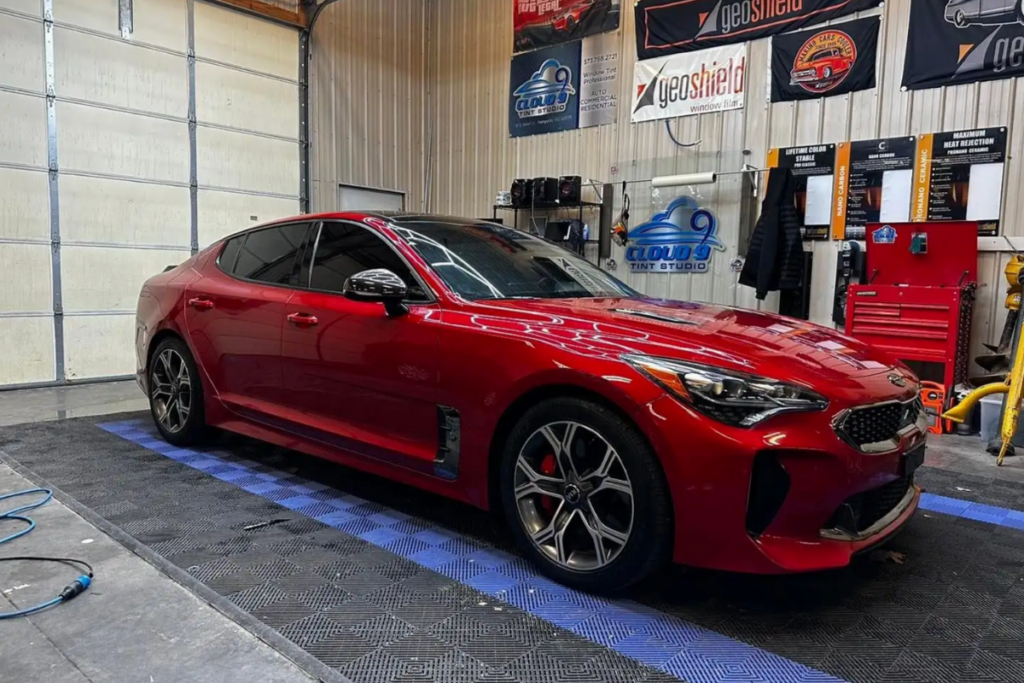In recent years, the demand for advanced protective coatings has surged across the automotive industry. Graphene and ceramic coatings stand out as leaders in this technological advancement. In this article, Cloud 9 Tint Studio and Auto Spa compare graphene and ceramic coatings, highlighting their unique attributes, applications in the automotive sector, and considerations for choosing the right coating.

Rev up your protection: Compare graphene vs ceramic coatings
Understanding Graphene Coatings
Graphene is a single layer of carbon atoms arranged in a hexagonal lattice, renowned for its extraordinary properties. It boasts exceptional strength, surpassing that of steel, yet remains incredibly lightweight and flexible. Graphene is also highly conductive, facilitating efficient heat and electricity transfer.
How graphene coatings work to enhance surface protection
Graphene coatings form a robust barrier that adheres strongly to surfaces, providing excellent protection against scratches, abrasion, and corrosion. Due to its impermeability and high surface area, graphene can create a barrier that repels water and contaminants effectively.

Graphene – your ultimate shield against wear and tear
Benefits of graphene coatings:
- Durability: Graphene’s strength and resilience make coatings highly durable, extending the lifespan of protected surfaces.
- Minor scratch resistance: Its hardness and toughness help prevent tiny scratches and surface damage.
- Thermal management: Graphene’s excellent thermal conductivity aids in dissipating heat, which can be crucial for applications requiring heat management.
Graphene coatings are thus not only protective but also contribute significantly to enhancing the performance and longevity of coated surfaces in various industrial and consumer applications.
Read more: How to remove dog hair on your car
Exploring ceramic coatings
Ceramic coatings are typically composed of substances like silica dioxide and titanium dioxide, which bond chemically with the surface to create a strong, protective layer.
How ceramic coatings form a hard protective layer on surfaces
These coatings undergo a chemical process upon application, creating a hard, glass-like layer that adheres tightly to the surface. This layer enhances durability and provides resistance against swirl marks, chemicals, and environmental contaminants.
Benefits of ceramic coatings
- UV protection: Shields surfaces from harmful UV rays, preventing color fading and oxidation.
- Hydrophobic properties: Repels water and liquids, making surfaces easier to clean and maintain.
- Aesthetic enhancement: Enhances gloss and depth of surfaces, providing a sleek and attractive finish.
Ceramic coatings are valued for their ability to enhance surface longevity, maintain appearance, and protect against a variety of environmental factors, making them popular in automotive, marine, and architectural applications.

Unlock longevity and beauty with ceramic coatings
Key differences between graphene and ceramic coatings
| Graphene Coatings | Ceramic Coatings | |
| Application methods | Both of these services require very complicated and meticulous application steps, requiring professional support. If you want to DIY, we recommend applying ceramic coating. | |
| Performance metrics | Graphene-enhanced ceramic coatings excel in durability, providing strong protection against wear, scratches, and corrosion due to their inherent strength and flexibility. However, current formulations typically contain a lower percentage of graphene, which limits their ability to surpass traditional ceramic coatings in terms of durability. Graphene also enhances thermal management, making these coatings suitable for high-temperature applications. | Ceramic coatings are renowned for their exceptional durability, forming extremely hard layers that offer superior scratch resistance and robust UV protection. While they may not dissipate heat as effectively as graphene in certain applications, their proven reliability makes them highly recommended for various protective coating needs. |
| Cost considerations | Graphene coatings tend to be more expensive than ceramic coatings primarily due to the complexity of manufacturing processes and the unique properties of graphene itself. | Ceramic coatings, while still premium products, are often more cost-effective in comparison, making them a popular choice for consumers seeking high-performance protection without the highest price tag. |
Understanding these differences helps consumers and industries make informed decisions based on their specific needs, budget considerations, and desired performance outcomes.
Read more: What is clay bar treatment, and what are its benefits?
Cloud 9 Tint Studio and Auto Spa in Perryville, MO: Choosing the right coating for your needs
Cloud 9 Tint Studio and Auto Spa has a track record of delivering exceptional results. From protecting luxury vehicles to enhancing industrial equipment, our coatings have consistently met and exceeded expectations. Visit us at 111 South West St, Perryville, MO 63775, or call 573-570-4470 to schedule a consultation. Our hours are 8am-5pm Monday, Wednesday, and Friday, and 8am-8pm Tuesday and Thursday. Let us help you find the perfect coating solution tailored to your needs.
